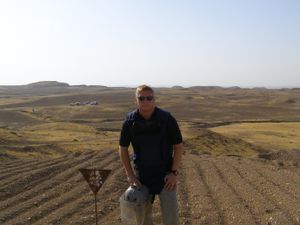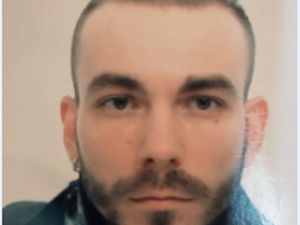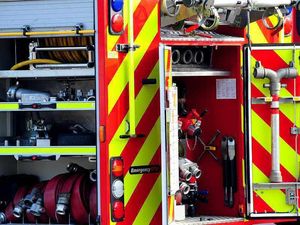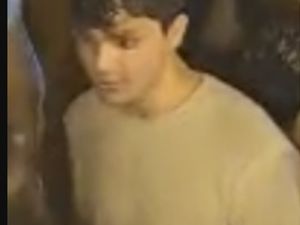Safety expert to help with mine clearance in war-torn countries
Helping to clear landmines in war-torn countries is certainly not for the faint-hearted.

But as a risk and safety expert Jonathan Smith has plenty of experience of being in potentially dangerous situations.
The 51-year-old has travelled to countries including Vietnam, Iraq and Afghanistan to help on mine clearance projects, which also educate communities about the threats unexploded ordnance pose.
His work includes identifying any risks such as transport to the minefields and the way controlled explosions are carried out.
He said: “In 2010, I was invited to learn about the work of the Mines Advisory Group (MAG), which helps to de-mine some of the world’s most challenging areas.
“I made my first visit to Iraq in 2011 and have also been back to the area since. During this time, I have met many victims of uncontrolled detonations of mines and unexploded ordinance. It makes you realise how lucky you are when you see such things in war-torn countries.
“My job was not only to critically assess the way they de-mine but holistically from the perspectives of security, transport and welfare.
“I am there to identify potential residual risks and to control them accordingly.”
Later this year he will be heading out to Uganda, Ethiopia and Malawi to work with Greater Manchester Police and the children’s charity Retrak. He will also be joined by his 21-year-old daughter Rosalea.
Mr Smith said the mines ‘don’t worry’ him but admitted the trips in September and October would be more nerve-racking than normal because he will be accompanied by his daughter.
“It will make me work harder and give 110 per cent to ensure the trip is as safe as it can be. I believe if you plan for every eventuality you can minimise the risks. I have confidence in myself in being able to do that. It’s rewarding work,” he added.
His day job sees him provide bespoke risk and safety advice for a wide range of different clients and event organisers ranging from Harrods to Chelsea Football Club.
After leaving school, the father of three thought he was destined for a career in the military but he quickly discovered it wasn’t for him.
He began working as an apprentice carpenter and joiner, a job he enjoyed for several years before changing direction to take up a position in risk and safety management at Wolverhampton Council.
A spell at a practice in Birmingham followed as well as three years spent on the design team for the £545million Queen Elizabeth Hospital in Birmingham.
But after becoming ‘bored of driving into Birmingham all the time’ he decided to set up on his own firm - Online Safety Solutions which is based at his home on the Weston Park estate, near Shifnal.
Since then he has worked with a range of celebrities including Frankie Valli, Simon Cowell, Boy George, Status Quo and Jools Holland and advised on events where the capacity can range from 5,000 to 50,000.
He says every job is approached in the same way - he considers every possible health and safety risk ranging from the employees to the image of the company so that plans can be put in place ahead of time.
“I’ve been working on a construction project for Harrods which is creating a new VIP baby area for Harrods. It means considering everything from ‘how are we going to take a wall down’ to ‘how are we going to stop someone who shouldn’t be there from getting into the building,” explains Mr Smith.
It means safety will always come fire even if it means interrupting a well-known performer’s concert. “I had to halt one of the Jools Holland’s concerts for half an hour after a suspect package was spotted by the stage. It was a false alarm but Jools didn’t know at the time why we had stopped the concert,” he said.
One of his more unusual tasks saw him travel to the Egyptian Museum in Cairo.
He was appointed through the British Embassy in Cairo and looking at all aspects of risk in the museum including fire safety, transportation of the artefacts and forensic examinations of mummies as well as the security procedures implemented within the building
“I was only the non-employee to get to go underground. There are 200,000 artefacts in the museum but what people don’t realise is that there are 200,000 artefacts underneath the museum too. It was fascinating work and a real privilege to have been asked,” said Mr Smith.





